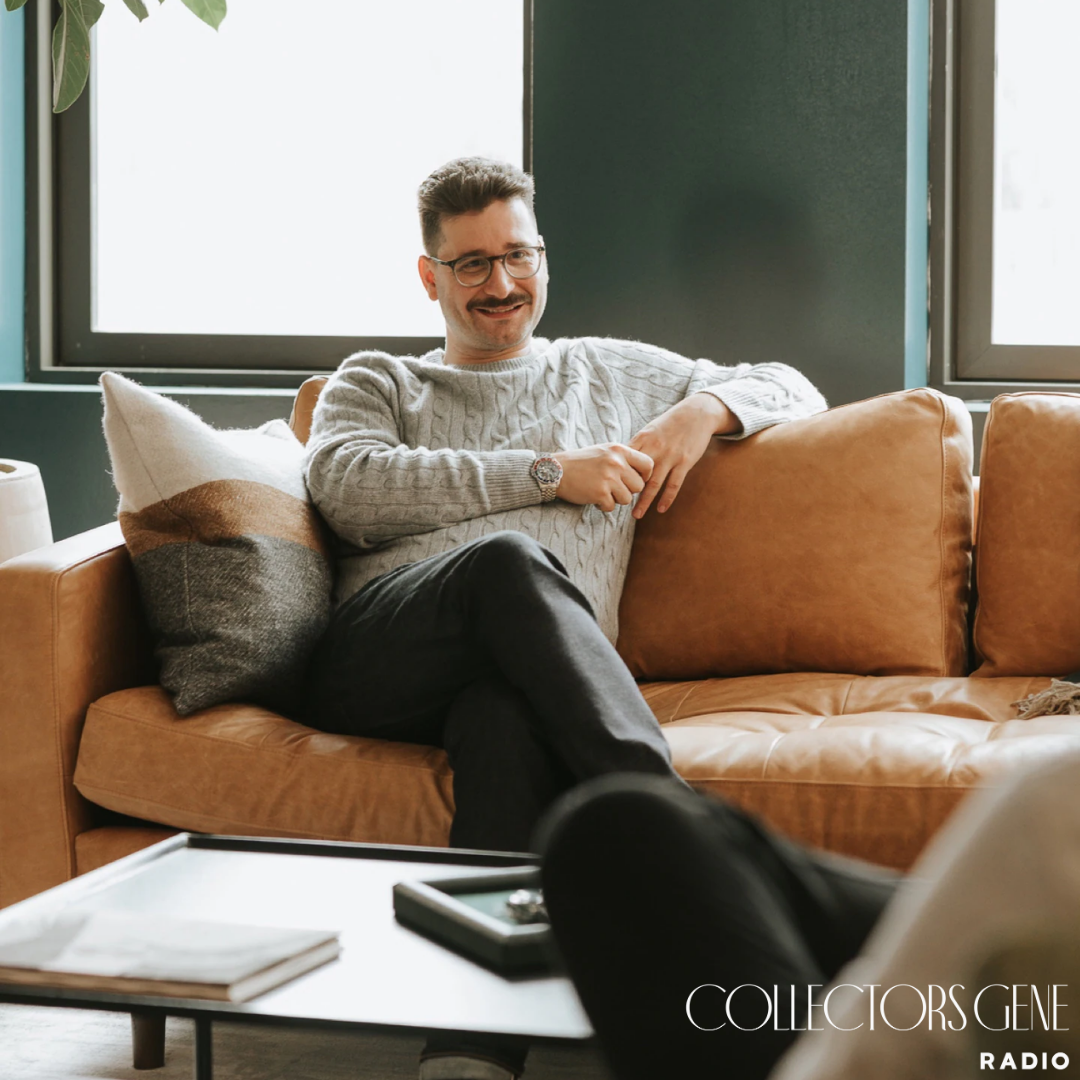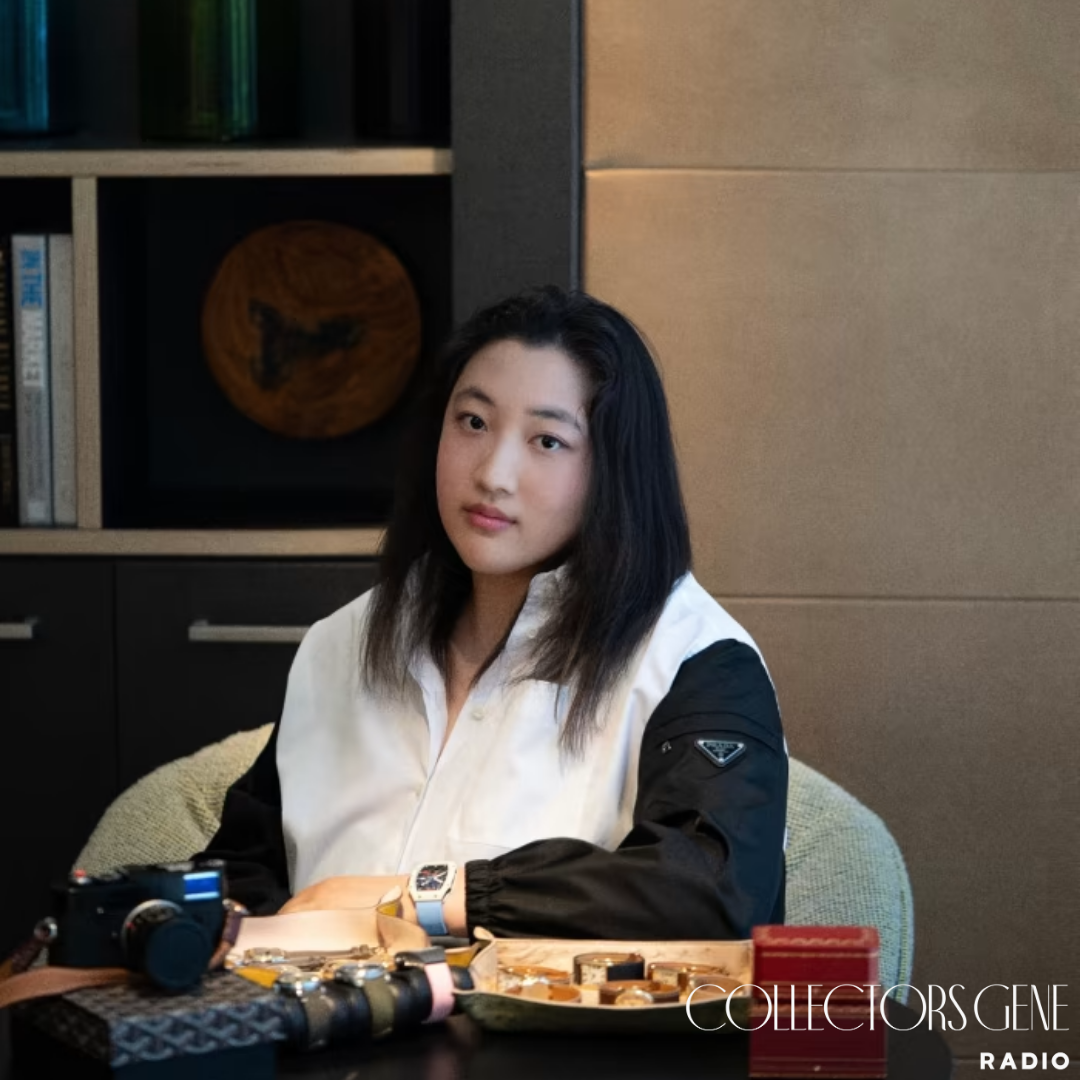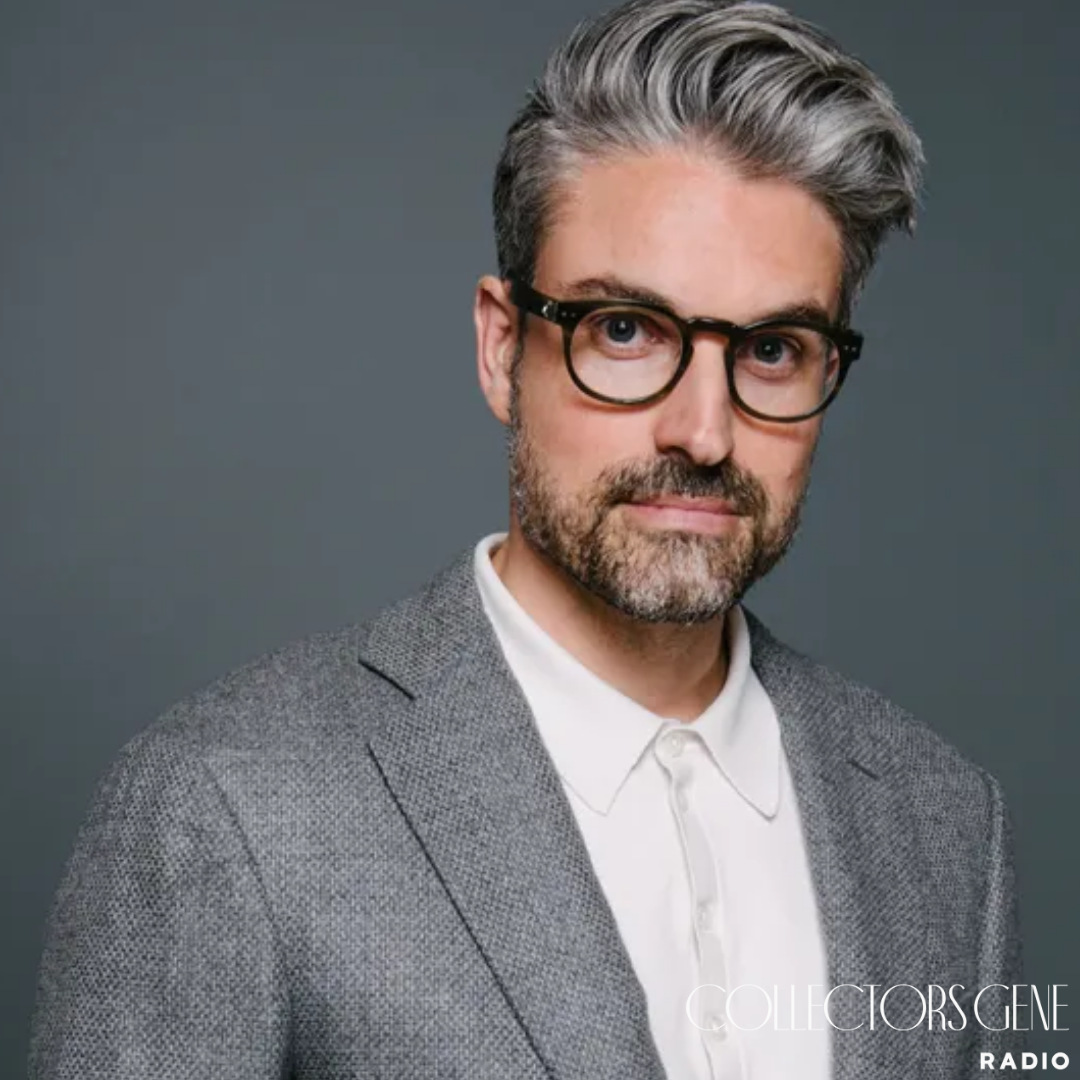When most people picture a collector, they think of overflowing rooms and vaults stacked with objects. Todd Levin challenges that stereotype. He doesn’t hoard or chase trends. Instead, he treats collecting like an extension of his curatorial work: thoughtful, precise, and purposeful.
In Episode 8 of Collectors Gene Radio, I sat down with Todd to explore how a man who advises museums and private clients on some of the most important art in the world builds his own collection. From his Frank Lloyd Wright home to jazz LPs, coins, whiskey, and independent watchmaking, Todd has crafted a philosophy of collecting that is as disciplined as it is personal.
Living in a Frank Lloyd Wright Work of Art
Todd joined me from the Stuart Richardson House, one of Wright’s Usonian designs built entirely on a hexagonal grid. No right angles, only 60- and 120-degree ones. Walking through it feels like stepping into geometry made livable, where form and function are fused with audacity.
His relationship with Wright’s work goes back to his childhood, when his mother, an interior designer, brought him on tours of Wright homes. Those experiences lingered for decades before culminating in the chance to live inside one. Even now, Todd admits that he sometimes walks through the house at night in disbelief, aware that he inhabits a design that is both radical and deeply human.
Why People Collect
When I asked Todd why people collect, he didn’t just share his own views. He went back to an 1895 essay by Georg Simmel, who argued that collecting balances two impulses: the desire to belong and the desire to stand apart.
That paradox resonated. Owning a Submariner might signal kinship with other watch lovers, but pursuing a George Daniels piece is a declaration of individuality. A library of Blue Note records shows affinity for jazz, but a one-off acetate pressing says something entirely different. For Todd, collecting is about navigating this tension.
The Curator and the Collector
Professionally, Todd advises collectors through Levin Art Group, helping them refine holdings, trade up, and acquire canonical works. His ethics require that he never compete with clients. That means he draws a sharp line between professional and personal collecting.
Unlike many collectors, Todd doesn’t flip or sell. If he acquires something, it stays. For clients, refinement often means replacing “good” with “great.” For Todd, it means living with the objects he’s chosen and letting them become part of daily life.
Watches, Rediscovered Through His Father
Todd’s story of entering watches is unlike any I’ve heard. Late in his father’s life, he noticed him poring over WatchTime magazine with a magnifying glass. His father wasn’t wealthy; he bought himself one special watch, a Citizen Campanola, which represented luxury on his terms.
After his father passed, Todd found the magazines, filled with post-it notes in his father’s hand: comments about dial colors, case shapes, small design details that had caught his eye. It felt like an ongoing dialogue, even after he was gone. That discovery pulled Todd into watches with purpose, connecting design and memory in a deeply personal way.
Straight to the Independents
Where most collectors begin with Rolex or Omega, Todd skipped straight to the masters. George Daniels, Philippe Dufour. For him, they weren’t just watchmakers; they were the horological equivalents of Vermeer or Wright. Singular, finite, and definitive.
It wasn’t bravado. After decades of evaluating art for others, Todd already had the skills to assess provenance, quality, and significance. He didn’t need to “learn” connoisseurship by trial and error. He applied the same discipline he had honed in art to watches and went directly to the pinnacle.
Collecting Across Categories
What struck me most about Todd is how his approach doesn’t change whether he’s buying a Daniels watch, a Blue Note pressing, or a bottle of Japanese whiskey. The scale may shift, but the principles don’t. Educate yourself. Develop an eye. Buy with conviction.
He also insists on living with what he owns. He plays the rare records. He wears the watches. He inhabits the Wright house every day. Nothing is sealed away or treated as too precious. Collecting, in his mind, is about use as much as ownership.
The Collectors Gene Rundown
The One That Got Away: Todd passed on an early FP Journe subscription tourbillon, dismissing its aesthetics at the time. With hindsight, and soaring prices, it’s the one he wishes he had stretched for.
The On Deck Circle: Roger Smith has his attention, though he admits the waitlists and his own timeline may never align. He’s also considering branching into vintage watches, balancing independents with key historical pieces.
The Unobtainable: A first-series Patek Philippe 2499. Not because it’s unbuyable, but because Todd knows he’d never wear something that valuable. For him, usability is essential.
The Page One Re-Write: If he could start fresh, Todd would chase original film posters or Detroit muscle cars. He pictures a Metropolis poster on the wall or a ’59 Cadillac Eldorado Biarritz in the garage.
The GOAT: Donald and Mera Rubell. Their blend of quality, vision, and generosity in collecting contemporary art stands as the model he most admires.
The Hunt or the Ownership: Neither holds as much weight as the education. For Todd, the deepest satisfaction comes from knowing he’s identified the right example, the best expression of a category, and learning in the process.
Do You Feel That You Were Born With The Collector’s Gene?: He isn’t sure it’s innate. Maybe it’s nurture, his mother’s influence. But he admits the impulse has always been there, waiting to be fanned into something larger.
Closing Thoughts
Todd Levin collects with the precision of a curator and the restraint of someone who values knowledge over accumulation. He doesn’t chase hype, he doesn’t measure success in volume, and he doesn’t buy for resale. His collections from watches to records to architecture are about living with objects and learning from them.
In a culture where collecting often tilts toward spectacle, Todd reminds us that it can also be quiet, thoughtful, and deeply intentional. That kind of clarity doesn’t just preserve taste; it sets a standard for what collecting can aspire to be.





